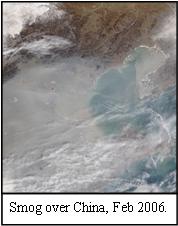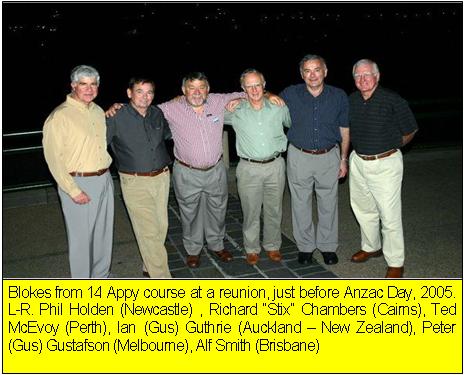|
RAAF Radschool Association Magazine - Vol 19
November 2007 Page 14 |
|
|
Global warming.—Menace or myth
There’s an old saying, “Climate is what we expect, weather is what we get"
The Kyoto treaty, restricting Carbon Dioxide emissions and
aimed at reducing global warming, came into effect in 1997. This was
bought about as many feel that the world is heating up far too quickly and
that temps will be be
However, is the future as bleak as some would have us believe?? What is fact is the world has gone through 8 ice ages in the past 160,000 years and between each ice age the world warms up—naturally, it’s been doing so for ever. Back in March 1933 The New York Times's headline read, "America in Longest Warm Spell Since 1776; Temperature line records a 25-year rise." Later, in 1975, it screamed: "Scientists ponder why world's climate is changing; A Major Cooling widely considered to be Inevitable."
There has always been a huge amount of hysteria involved in climate change. In the mid-1970s, Fortune Magazine focused on the peril of global cooling, and was especially severe. It said: "As for the present cooling trend a number of leading climatologists have concluded that it is very bad news indeed. It is the root cause of a lot of that unpleasant weather around the world and they warn that it carries the potential for human disasters of unprecedented magnitude." Fortune's analysis was so impressive that it actually won a "Science Writing Award" from the American Institute of Physics. Lowell Ponte, whose 1976 book "The Cooling" asserted that "The cooling has already killed hundreds of thousands of people in poor nations. If countermeasures aren't taken” he warned, “it would lead to world famine, world chaos, and probably world war, and this could all come by the year 2000." Today Al Gore's movie, "An Inconvenient Truth," says the exact opposite. He says we are all going to perish through over heating.
Since 1895 there has been four swings of scientific opinion on climate conditions, with considerable overlapping, from global cooling (1895-1932) to global warming (1929-1969) to global cooling (1954-1976) and now back to global warming (1981 to the present).
It is beyond doubt that certain gases in the atmosphere, most importantly water vapour and carbon dioxide, trap infrared radiation emitted by the Earth's surface and so have a greenhouse effect. This in itself is no bad thing. Indeed, without them the planet would freeze. There is also no doubt that human activity is pumping Carbon Dioxide into the atmosphere, and that this has caused a sustained year-on-year rise in Carbon Dioxide concentrations. For almost 60 years, measurements in Hawaii have charted this rise, and it is largely uncontested that today's concentrations are about 35 per cent above pre-industrial levels, from 315ppm in 1958 to 375ppm in 2004.
The effect this has on the planet is also measurable. In 2000, London researchers examined satellite data covering almost three decades to plot changes in the amount of infrared radiation escaping into space. They found that between 1970 and 1997 less and less radiation was escaping which meant that the atmospheric was trapping energy that used to escape, and storing it as heat.
There is little doubt that the climate is changing right now.
Temperature records
But that doesn't necessarily mean that human activity is to blame. It is now recognised that up to 40 per cent of the climatic variation since 1890 is probably due to two natural phenomena. The first is solar cycles, (increased solar activity) and the changing frequency of volcanic eruptions,
The concentration of Carbon Dioxide in the atmosphere now stands at around 375 parts per million. A doubling of Carbon Dioxide from pre-industrial levels of 280 parts per million, which could happen as early as 2050, will add only about 1°C to average global temperatures, other things being equal. But if there's one thing we can count on, it is that other things will not be equal; some important things will change.
Melting of polar ice is almost certainly one. Where the ice melts, the new, darker surface absorbs more heat from the sun, and so warms the planet. This is already happening. A warmer world will evaporate more water from the oceans, giving an extra push to warming. But there is a complication. Some of the water vapour will turn to cloud, and the net effect of cloudier skies on heat coming in and going out is far from clear. Clouds reflect energy from the sun back into space, but they also trap heat radiated from the surface, especially at night. Whether warming or cooling predominates depends on the type and height of clouds with many predicting a cooling effect.
We can all remember how the weather was different “when we were young”. But, the atmosphere is a huge and complex thing, have we stuffed it in such a short time?? Believe what you will. |
|
|
You must be a management consultant if you don’t think the glass is half full, or half empty; you just think it is too big. |
Did you hear about the Irishman who had a greyhound? He painted a bus along the side of it. |
 tween
5C and 11C warmer by 2050.
tween
5C and 11C warmer by 2050. from
around the world going back 150 years suggest that 19 of the 20 warmest
years, measured in terms of average global temperature, have occurred
since 1980, and that four of these occurred in the past seven years.
from
around the world going back 150 years suggest that 19 of the 20 warmest
years, measured in terms of average global temperature, have occurred
since 1980, and that four of these occurred in the past seven years.